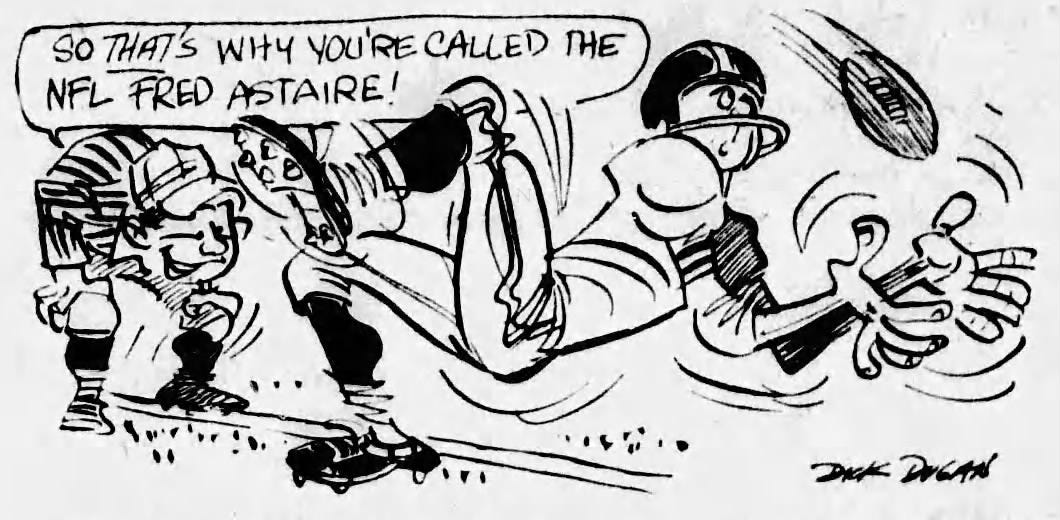Today's Tidbit... One Foot Inbounds Or Two?
Among the most controversial rulings made by officials during football games concern receivers catching the ball before going out of bounds. Those rulings have long been controversial and, as best as I can tell, the relevant rules were unclear for years as well.
I have printed or PDF copies of the rule books for 117 of the 148 years of college football and 35 years of NFL rules. The birth of some rules is easy to find; others are much harder, and the rules covering legal catches along the sidelines are among the latter. So, I spot-checked some years and dug into others, and here's what I found.
College football had a rule by 1914 that a player making a fair catch was out of bounds if any part of his body was on or outside the sideline. They did not have a similar rule covering the forward pass, though they added a rule covering the end line in the 1940s, and by 1960, the rule covered forward passes along any boundary line.
It is also incomplete when a player jumps and catches the pass but lands on or outside a boundary line.
The NCAA rule did not explicitly address whether players needed one or both feet inbounds, but newspaper accounts suggest that one foot inbounds was the standard. Apparently, you were inbounds if you were not out of bounds.
The NCAA continued on its merry way until 1969, when the rule became clearer:
If one foot lands in bounds with the other foot not contacting, and the receiver has possession and control of the ball, or if both feet are in bounds, the pass is complete... If the out-of-bounds foot lands simultaneously with, or before, the landing of the inside foot, the pass is incomplete.
Now, anyone who watches college and pro football knows the NCAA rules requires one foot in bounds, while the NFL requires both feet in bounds, so when did those streams diverge?
Through 1948, the NFL rule interpretation stated:
On a forward pass, a player jumps and catches landing on or outside the side line or end line. RULING: Incomplete. However, if he is carried out of bounds while he is in possession in the air, by an opponent, the pass is complete at the furthest point of advance.
The NFL rules committee thought the one-foot-inbounds rule was difficult for officials to judge, so they changed the rule interpretation in 1949 to read:
Eligible 1 jumps in the air to receive a forward pass. In alighting with the ball in his possession near the sideline: a) he straddles line; b) one foot is in bounds and he then steps across the line with the other, or; c) both feet are inbounds and he then steps across the line. RULING: a) and b) incomplete, c) complete.
So, the NFL set its own course in 1949 while the NCAA dawdled for another 20 years before making the ruling clear. Since then, the high schools and most or all other pro leagues have followed the NCAA's direction and required only one foot inbounds for a legal catch.
Notice: FootballArchaeology is not subject to Trump’s idiotic tariffs, so the $50 annual subscription is still just $50.
Click here for options on how to support this site beyond a free subscription.



Excellent research! That is really interesting how the NFL evolved it's rule in that manner. I had always just assumed they created the two feet rule due to making it more difficult because after all they are the best of the best in the NFL
In his 1970s hit R&B tune "Wide Receiver", singer/musician Michael Henderson called my attention to this in a spoken passage: "I put both my feet down/and still I didn't get the point/the referee/must have been smoking a joint..."